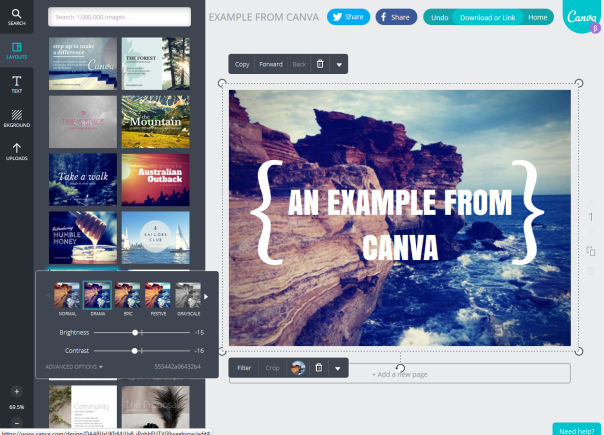Canva is an online, cloud-based design website that provides over 8.5 million users around the world with the tools to create high-quality graphics for both print and digital use. The tool, along with a large base of graphics, design templates, and photos, is free to use. Canva also has premium features available to the user for one dollar each and are available on a pay-per-use basis. However, Canva does not require the user to make any purchases at any time in order to create and maintain an active account. Canva is particularly useful due to its ability to allow the user to download the final product for free; this tool provides all of the quality of a professional designer for none of the cost. A user can create anything from a social media post to a Facebook cover to a poster to an infographic to an invitation; all of these layouts come pre-configured and allow the user to utilize a myriad of customized style templates, fonts, photos, filters, and more. There are also options to make completely customized documents, enabling the user to utilize an affordable design tool alongside existing branding materials.

An arts organization can make great use of this tool to help streamline branding strategies, create eye-catching and impressive social media graphics, and, in general, present final products that add sophistication to the organization’s public-facing image. A similar program to Canva is Adobe Photoshop; Photoshop’s software can be pricey and typically requires the user to have pre-existing knowledge of its functions. Canva offers an expense-free, user-friendly alternative that cannot be rivaled. This can be particularly advantageous for small arts nonprofits; recently the local arts organization Gourmet Symphony took advantage of the tool’s features for logo creation, and social media and event advertisements. Emerging Arts Leaders of DC (EALDC) has also used this tool for multiple programming, social media posts, and outreach initiatives exclusively over the last year.